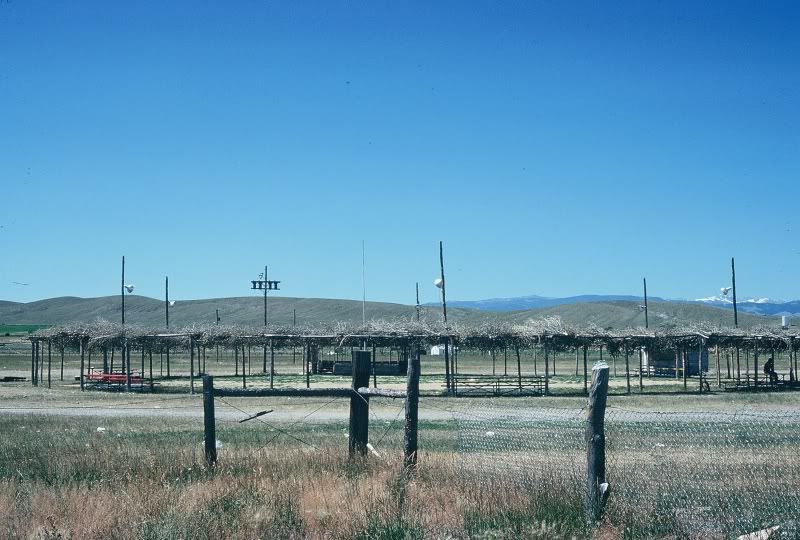Tom and Helen Johnson's Blog
Friday, May 13, 2011
Slideshow of the Wind River Reservation, Wyoming
Helen reads a passage from Two Toms: Lessons from a Shoshone Doctor, available at most online booksellers.
Thursday, May 12, 2011
Monday, April 11, 2011
Two Talks about Two Toms
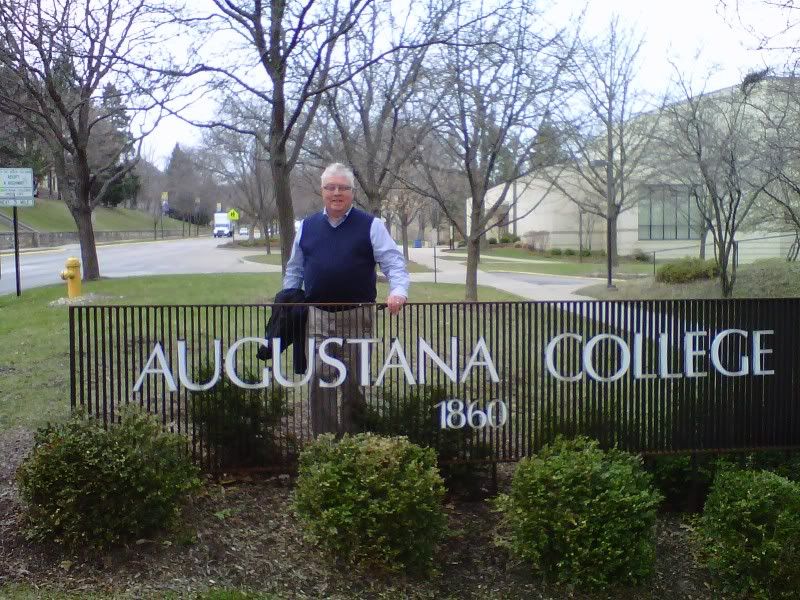 |
| Tom at Augustana College, Rock Island, Illinois last Wednesday |
Last week, we packed up the Jeep and headed out to:
1. Augustana College in Rock Island, Illinois. The snow line was about 50 miles north of Madison, Wisconsin. On the Augustana campus, the daffodils and magnolias bloomed, the birds sang, and a soft breeze blew.
Quad-Cities Online has a nice write-up here of our visit. BTW, if you're a fan of Southwest Indian art, Augustana is home to the breathtaking Olson-Brandelle Collection.
2. The University of Iowa, host of this year's meeting of the Central States Anthropological Society, was even more Spring-y. Our Wisconsin clothes were too heavy for the 80-degree weather.
We were part of a session on "Innovative Ethnographies". Our talk was about a favorite chapter from Two Toms: Lessons from a Shoshone Doctor. The chapter details a peyote ceremony at the Shoshone-Bannock Reservation in Idaho. As with all peyote meetings, this one dealt with the immediate concerns of the community. In 1969 this centered around the Vietnam War and its effect on the family of a Shoshone draftee.
It was fun to connect with an audience of many levels of interest in Native American culture and difficult to put back on the heavy clothes, get back in the Jeep to head back north.
Wednesday, February 9, 2011
Tom and Helen Speak! (With coffee in hand)
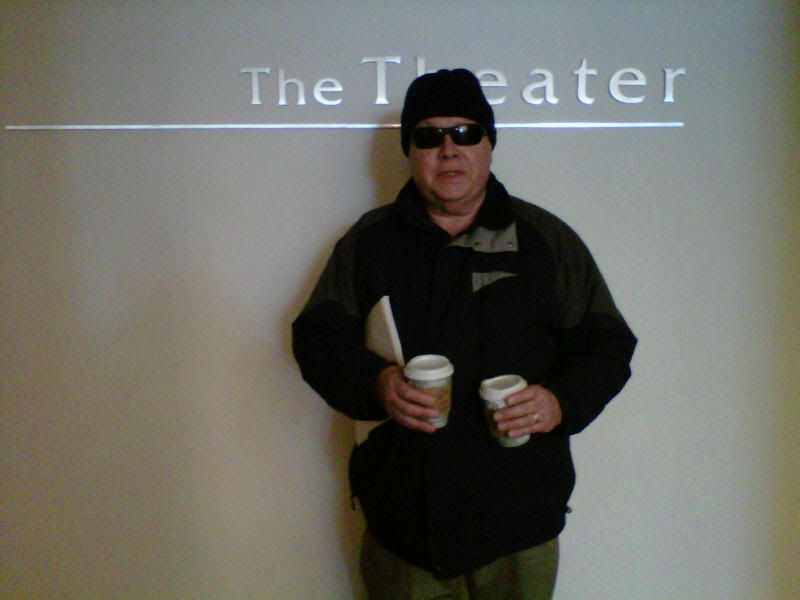 |
| Tom warming up with coffee before the presentation |
Talk about a nice audience - I didn't even know there were people who stayed after a 90-minute presentation to ask questions and chat!
Yesterday we gave our first talk about Two Toms. Both of us have a lifetime of public speaking experience but you never know how the first run-through is going to go.
We got to the auditorium at the University of Wisconsin - Stevens Point early enough to grab a cup of coffee and check out the a/v equipment. It was a beautiful theater - yay. The day was cold, even for February in Wisconsin. Thanks to everyone who braved the Arctic blasts of wind to come out.
It was such a pleasure to introduce the audience to Tom Wesaw, the Shoshone doctor ("medicine man" or "shaman" in non-Indian speak). Tom first met him in the mid-1960's at a Sundance to protest the Viet Nam war. Three years later, the doctor invited him to live with him and learn from him.
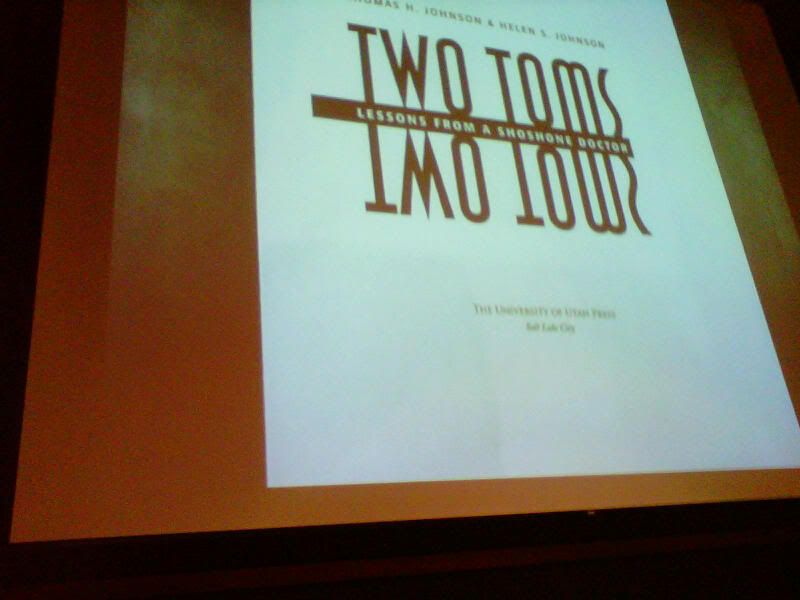 |
| Newly-constructed theater, seats filled with interested people, big projection screen - what's not to love? |
Their first house call together was to a young woman suffering from recurring nightmares. It is one of my favorite passages in Two Toms and my pleasure to read it to the audience.
Tom talked about how strongly-held Native beliefs and practices can help bring about change. These practices are vital to each indigenous community and were often suppressed in the past with the intention of weakening resistance to what the colonial authorities wanted - total obliteration of the old culture and an embrace of the conqueror's ways and beliefs. Another way of characterizing what the Shoshone are going through today is the term resistance to acculturation. They resist what is foreign and foisted on them by another culture in order to regain the pride in who they are today.
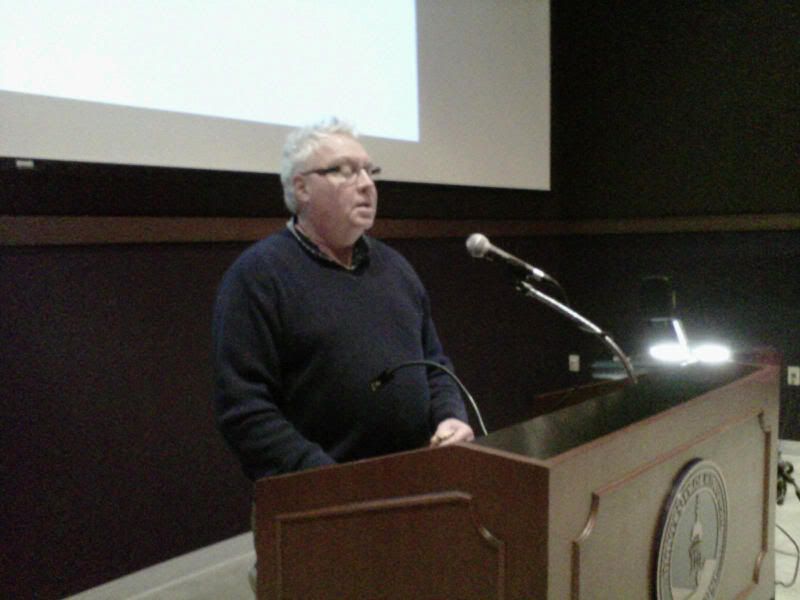 |
Okay, it's Tom's birthday today and I have a dinner to make so I'm going to get going. Can I just say, though, that we couldn't have asked for a nicer audience than yesterday's for our first presentation on this book.
-Helen
Friday, December 31, 2010
Looking forward to 2011
Our newest book, Two Toms: Lessons from a Shoshone Doctor, will be available Spring 2011 from the University of Utah Press. It's called Two Toms because it's about a Shoshone doctor, Tom Wesaw, and me, Tom Johnson. On the Wind River, Wyoming Reservation, we were known collectively as Two Toms.
The picture above shows the circular arbor of a pow-wow - a three-day event held each summer by the Shoshone of Wind River, Wyoming, and also by the Arapaho. Dancing and dance-contests for all ages and for men and women take place each afternoon and evening, with colorful garb. Tom Wesaw and I often visited the pow-wow and for Tom it was a chance to renew acquaintances and for me, a chance to meet new people. .
On one of our trips to visit a client who needed doctoring, I drove past this old abandoned one-room log cabin, that may have been a home for an entire family in the 1930's, a period of extreme poverty.
 |
| Moccasin Lake at 8,000 feet in the Wind River Range. |
Sunday, October 17, 2010
Abandoned Cabin, Wind River
When I began field work on the Wind River Reservation as a graduate student, I decided to compare living conditions in the 1930's when everyone was poor to the late 1960's, when the Wind River Shoshone and Arapaho had been getting some revenue from their oil and gas leases and had more assistance in providing better housing. This one-room log house was typical of the way people lived in the 1930's and only the more fortunate Shoshone like Tom Wesaw, who worked in the flour-mill, had a frame house with more than a single room.
Whole families would live in this one room, sleeping in beds around the inside of the room. Often, houses had only a dirt floor, and many people still lived in army-style canvas tents. One Arapaho woman described life in one of those houses as warm and cozy but there was a downside: diseases like tuberculosis spread quickly when people live so close to each other and in the 1930's there was still no cure for tuberculosis. By the 1960's, drugs had almost eliminated that dreaded disease.
This lone house beside the road with its boarded-up front door is a grim reminder of what life was like on the reservation only a few years earlier.
Friday, October 15, 2010
Moccasin Lake
Moccasin Lake high in the Wind River Range is a secluded area in Wyoming's Wind River Reservation at about 8,000 feet altitude. A long winding road with many switchbacks leads to it. In this area grow a variety of pine trees that are used for building the Sun Dance lodge and sweat lodges.
During the Sun Dance in July, Shoshone who are charged with constructing the lodge take a truck to this area and select the most perfect trees to be cut for building the lodge. In this photo, you can see how the glaciers scoured the mountainous slopes so that very little vegetation grows in the region beyond the lake. In the far distance is St. Lawrence Basin, a grassy plateau that is a summer pasture for cattle owned by members of the Shoshone nation.
I never went up here with Tom Wesaw, but did hike on the Bear's Ear Trail in the late 1960's, which goes deep into the mountains. For several years during the 1970's, the Shoshone Tribe declared this area to be off- limits to non tribal members. It was a protest against too many non-Indians using the Reservation for recreational purposes. Even a couple of years ago, the road to Moccasin Lake had been blocked again and for the same reasons but the blockade was later lifted.
Subscribe to:
Posts (Atom)
